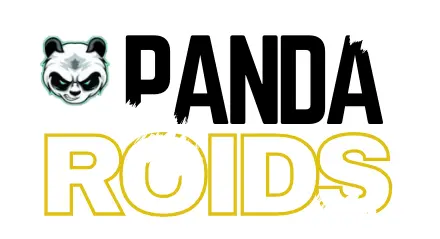A Technique that Adapts to Your Training.
What is autoregulation?
Autoregulation means that you listen to your body and include your current daily form in the training practice, instead of stubbornly working through a given plan. Even if you manage to do your squats according to plan on a bad day, even though you almost passed out after the first set, the question arises as to whether it makes sense. On the other hand, it seems just as nonsensical to leave it to an achievement on good days that falls short of your possibilities.
Your training plan, whether written yourself, downloaded from the Internet or prepared by a qualified B-license trainer from your studio, cannot predict the daily form of your training cycle and therefore only makes assumptions as to which performance development is desirable and, in the best case, realistic. If these assumptions are incorrect, there is no reason to stick to your training plan. After all, the training plan only serves to achieve your goals. But if it is in your way, you should make daily adjustments.
There are a number of reasons for reduced performance: Physical work, psychological stress, pain or insufficient regeneration since the last session are just a few examples.
It is therefore useful to make your strength training more flexible and take these factors into account. But even without restrictions, auto-regulation makes sense. Beginners in particular often carry out every training set until they are completely exhausted. Advanced users, on the other hand, know that it can make sense to leave one or two repetitions "in the tank" in order to increase the total volume across all training sets. The autoregulation helps you to implement this procedure.
How does auto regulation work?
Autoregulation works primarily in our understanding. To have greater success in the medium and long term through a lower intensity or lower volume than following a strict training plan, understandably sounds absurd to many at first. However, if, as is very often the case, a lack of regeneration, injuries or overtraining have been identified as the bottleneck for poor performance development, the meaning of the principle can be seen.
A lack of performance in training is always a signal from your body. On the one hand, you should ask yourself what is limiting you today and, on the other hand, respond appropriately to it.
In concrete terms, the autoregulation can be implemented via the rate of perceived exertion (RPE for short). The RPE uses the perceived exertion of a training performance to control it. The scale goes back to the power lifter Mike Tuchscherer and ranges from one to ten.
10: No more repetition possible
9.5: Perhaps one more repetition would have been possible
9: It would definitely have been possible to repeat it
8.5: One more repetition would have been possible, or even 2
8: Two more repetitions would have been possible
Etc.

Thus the RPE system does not refer to fixed key figures such as weight and repetitions, but only evaluates your subjective performance. This includes your daily shape and external circumstances.
In principle, you can apply the RPE in different ways. The RPE 8 specification allows you, for example, to complete a training set with a defined weight that leaves two repetitions feasible. Alternatively, you aim for a defined volume and increase the weight in sets until you reach an RPE of 8 with five repetitions, for example.
If your goal is to build strength and muscle mass, high RPE numbers are of course also generally beneficial - but only if they are appropriate. For example, with the aim of doing squats for 4-6 sets until you have reached RPE 9, you can enter the studio and adjust to RPE 8 or 10 if necessary.
What are the advantages of the principle?
Through the autoregulation or the RPE scale, your training adapts to your circumstances and not the other way around. In this way you make the most of a training session that does not allow for top performance and uses your full potential on days that are above average.
A great advantage of this form of training is that if you do it correctly and honestly, you practically never accumulate too much fatigue, as you always train according to your acute performance. In the long term, you can train harder as a result than through individual breakneck training sessions that cost you more strength than you use.
A study that compared an eight-week training program based on the percentage of intensity based on the 1RM with an RPE-based training approach found slight benefits of autoregulation in terms of muscle growth after bench press and squat.
A further investigation regarding the strength development of the squat and front squat found an increase of 11.7% in the knee bend and 10.8% in the front squat after 12 weeks of training through autoregulation. In contrast, subjects who trained according to a fixed percentage achieved only 8.3% and 7.1% increases in 1RM. Training after autoregulation is not a lazy excuse for bad days, but strictly speaking the only sensible reaction to it and has nothing to do with light training.
What are the disadvantages?
In order to be able to carry out auto-regulated training sensibly, you must be able to realistically assess your training performance and also be able to deal honestly with poor daily form. False ambition and too big an ego can hardly be reconciled with this approach. As a result, especially at the beginning, you may not feel 100% busy in training because you are finally training properly instead of completely shooting yourself off and accumulating unnecessary fatigue. You have to get used to that too. In addition, you probably won't know that you will be pushing 150 pounds 6x in 27 days. This can of course also happen during training after autoregulation, but you will only find out on this very day.
Who is the training for?
In general, anyone who has previously trained with a normal training plan can start auto-regulating. Athletes who, from experience, tend not to be able to assess themselves realistically or honestly, should be particularly attentive to the implementation. There are also athletes who get caught up in different approaches and think more about training than actually training. This group of people benefits from fixed structures and little decision-making burden - but that too can be trained.
Conclusion:
Exercising after autoregulation is a good way to adapt the training intensity to the current form of the day. In scientific studies it has already been slightly superior to the strict training control according to 1RM several times and is suitable for advanced and professionals who can realistically assess their performance and form. In the short term, RPE training may seem easier, but in the medium and long term you will be rewarded with strength and muscle mass.
Articles

The Sermorelin Ipamorelin Blend peptide is a powerful combination of peptides designed to support hormonal optimization and overall wellness in men. Both Sermorelin peptide and Ipamorelin peptide are growth hormone secretagogues, meaning they stimulate the body’s natural production of growth hormone through the pituitary gland.

We known more than 20 known esters of testosterone, but only a limited number are commonly available for use. Most of these synthetic derivatives have been developed for medical purposes, particularly in treating low testosterone in men.

It has a very short half-life of just 8 hours, meaning that it rapidly clears out of your system soon after you stop taking it.
PandaRoids Reviews
Please leave your review on products or service below.
For discounts, please contact us


